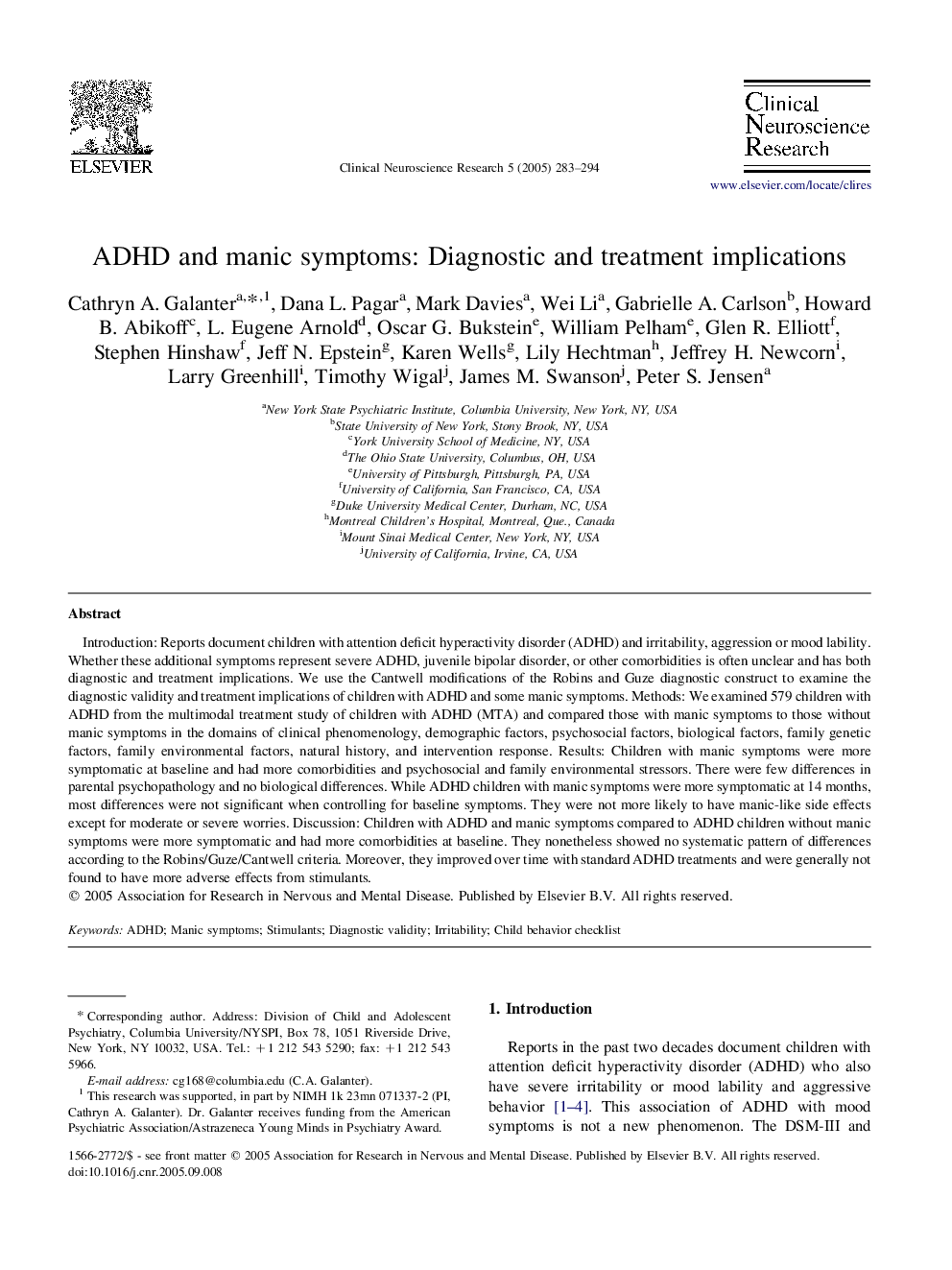| Article ID | Journal | Published Year | Pages | File Type |
|---|---|---|---|---|
| 9189875 | Clinical Neuroscience Research | 2005 | 12 Pages |
Abstract
Introduction: Reports document children with attention deficit hyperactivity disorder (ADHD) and irritability, aggression or mood lability. Whether these additional symptoms represent severe ADHD, juvenile bipolar disorder, or other comorbidities is often unclear and has both diagnostic and treatment implications. We use the Cantwell modifications of the Robins and Guze diagnostic construct to examine the diagnostic validity and treatment implications of children with ADHD and some manic symptoms. Methods: We examined 579 children with ADHD from the multimodal treatment study of children with ADHD (MTA) and compared those with manic symptoms to those without manic symptoms in the domains of clinical phenomenology, demographic factors, psychosocial factors, biological factors, family genetic factors, family environmental factors, natural history, and intervention response. Results: Children with manic symptoms were more symptomatic at baseline and had more comorbidities and psychosocial and family environmental stressors. There were few differences in parental psychopathology and no biological differences. While ADHD children with manic symptoms were more symptomatic at 14 months, most differences were not significant when controlling for baseline symptoms. They were not more likely to have manic-like side effects except for moderate or severe worries. Discussion: Children with ADHD and manic symptoms compared to ADHD children without manic symptoms were more symptomatic and had more comorbidities at baseline. They nonetheless showed no systematic pattern of differences according to the Robins/Guze/Cantwell criteria. Moreover, they improved over time with standard ADHD treatments and were generally not found to have more adverse effects from stimulants.
Related Topics
Health Sciences
Medicine and Dentistry
Clinical Neurology
Authors
Cathryn A. Galanter, Dana L. Pagar, Mark Davies, Wei Li, Gabrielle A. Carlson, Howard B. Abikoff, L. Eugene Arnold, Oscar G. Bukstein, William Pelham, Glen R. Elliott, Stephen Hinshaw, Jeff N. Epstein, Karen Wells, Lily Hechtman, Jeffrey H. Newcorn,
